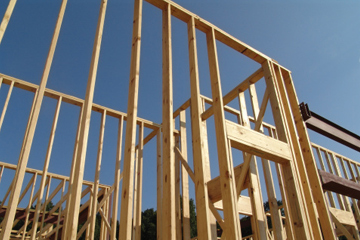Material banks
Contents |
Definition
Material(s) banks are repositories or stockpiles of valuable materials that might be recovered. If those materials replace primary resources used during the construction, operation or refurbishment of buildings and their parts, the need for primary resource mining, for example, of rare earth elements, can be eliminated.
This idea of urban mining implies effective material reuse and thus the realisation of material loops. Nevertheless, to enable and facilitate the harvesting of materials or building parts, it is necessary to design them in a reversible way.
Guidelines
Alternatively, the term 'material(s) bank' might also refer to bank institutions, managing the financial resources they are entrusted, for example by lending them to other individuals and businesses. Like financial resources, it is imaginable to entrust material resources to the building stock; and once materials are retrieved, they might have a higher value due to inflation.
This project has the ambition to implement the vision of ‘buildings as material banks’ during construction and refurbishment projects. Therefore, its outcomes will support their reversible design and the establishment of circular value networks through Materials Passports and Building Information Management.
Related terms
Recovery: the technological process of separating valuable materials or building parts from the building or assembly they were once integrated in, or from waste, in such a way that maintains or increases their value again.
Materials harvesting: recovering materials from the existing stock of building with the aim to reuse, recycle or biodegrade them and realise a technical or biological material loop.
Component harvesting: recovering assemblies of materials from the existing stock of buildings with the aim to reuse or recycle them and realise a technical material loop.
Urban mining: recovering materials or assemblies of materials from the building stock instead of using virgin materials.
Rare earth elements: chemical elements found in the earth’s crust that are vital to many modern technologies but are difficult to find in quantities enabling their economic development.
References
Electronic Recyclers International (2017). Urban Mining, homepage.Accessed March 2017 via www.urbanmining.org
Oxford Advanced Learner’s Dictionary. (2017). Accessed March 2017 via www.oxfordlearnersdictionaries.com. Oxford: Oxford University Press
--BAMB - Buildings As Material Banks 07:59, 15 Aug 2018 (BST)
Related articles on Designing Buildings Wiki
About the wiki
Anyone is welcome to use and contribute to the wiki in different ways.
[edit] Engaging with the wiki
You can:
- Contribute to existing articles
- Create articles
- Share articles through social media and other channels
- Contact the CIRCuIT project to let us know what you think and how we can improve
[edit] Add your own content
To contribute to or create an article, you can follow these steps:
- Register as a user
- Read through the editorial policy and guidance on writing and contributing to articles
- See the detailed help page on tips on writing wiki articles
- Try editing a test article
- If editing an article, select 'Edit this article' underneath the article title
- If creating a new article, select 'Create an article'. In the 'Select categories' area, expand the 'Industry context' list and tag 'Circular economy' to add your article to this wiki
[edit] Who is this wiki for?
The articles contain information on implementing circular economy approaches in construction that could be relevant to:
- Architects
- Construction contractors
- Designers
- Developers, owners, investors
- Engineers
- Landowners
- Manufacturers and supplier
- Universities and research
- Urban planners
[edit] About CIRCuIT
The Circular Economy wiki is supported by the Circular Construction in Regenerative Cities (CIRCuIT) project, which is funded by the European Union's Horizon 2020 research and innovation programme. CIRCuIT is a collaborative project involving 31 ambitious partners across the entire built environment chain in Copenhagen, Hamburg, Helsinki Region and Greater London. Through a series of demonstrations, case studies, events and dissemination activities, the project will showcase how circular construction practices can be scaled and replicated across Europe to enable sustainable building in cities and the transition to a circular economy on a wider scale.








